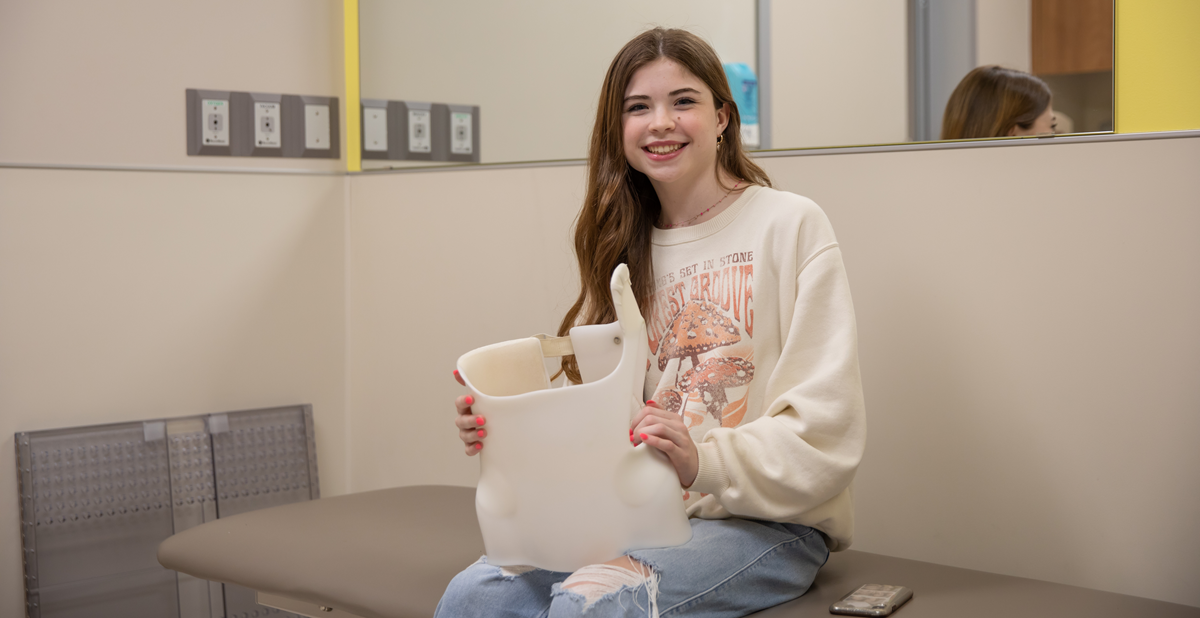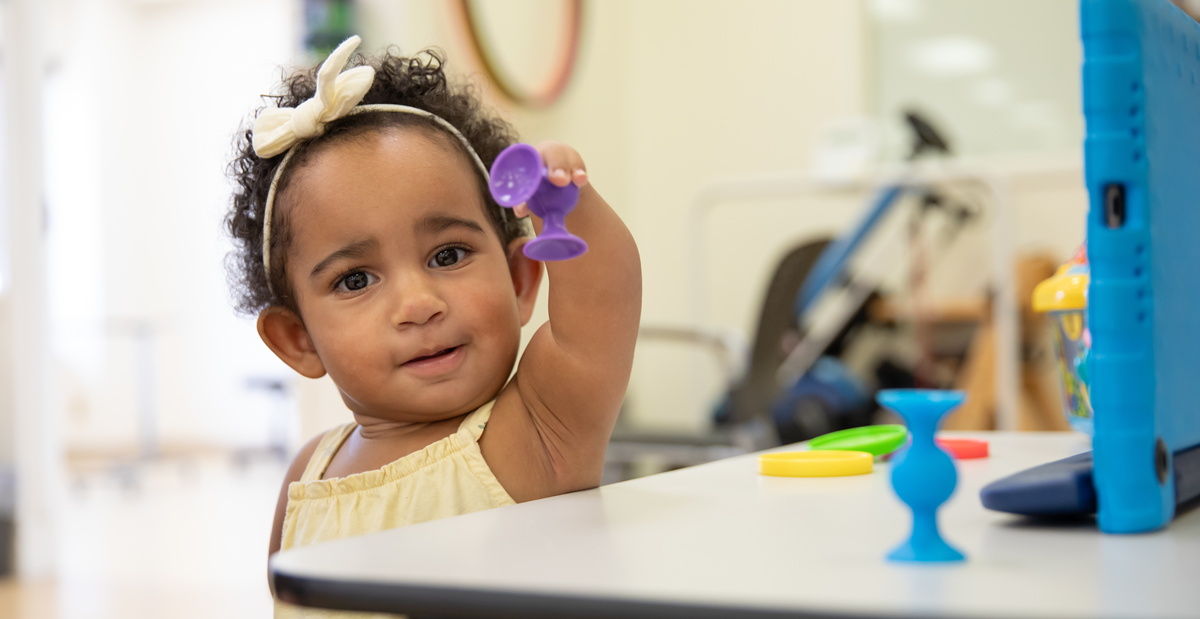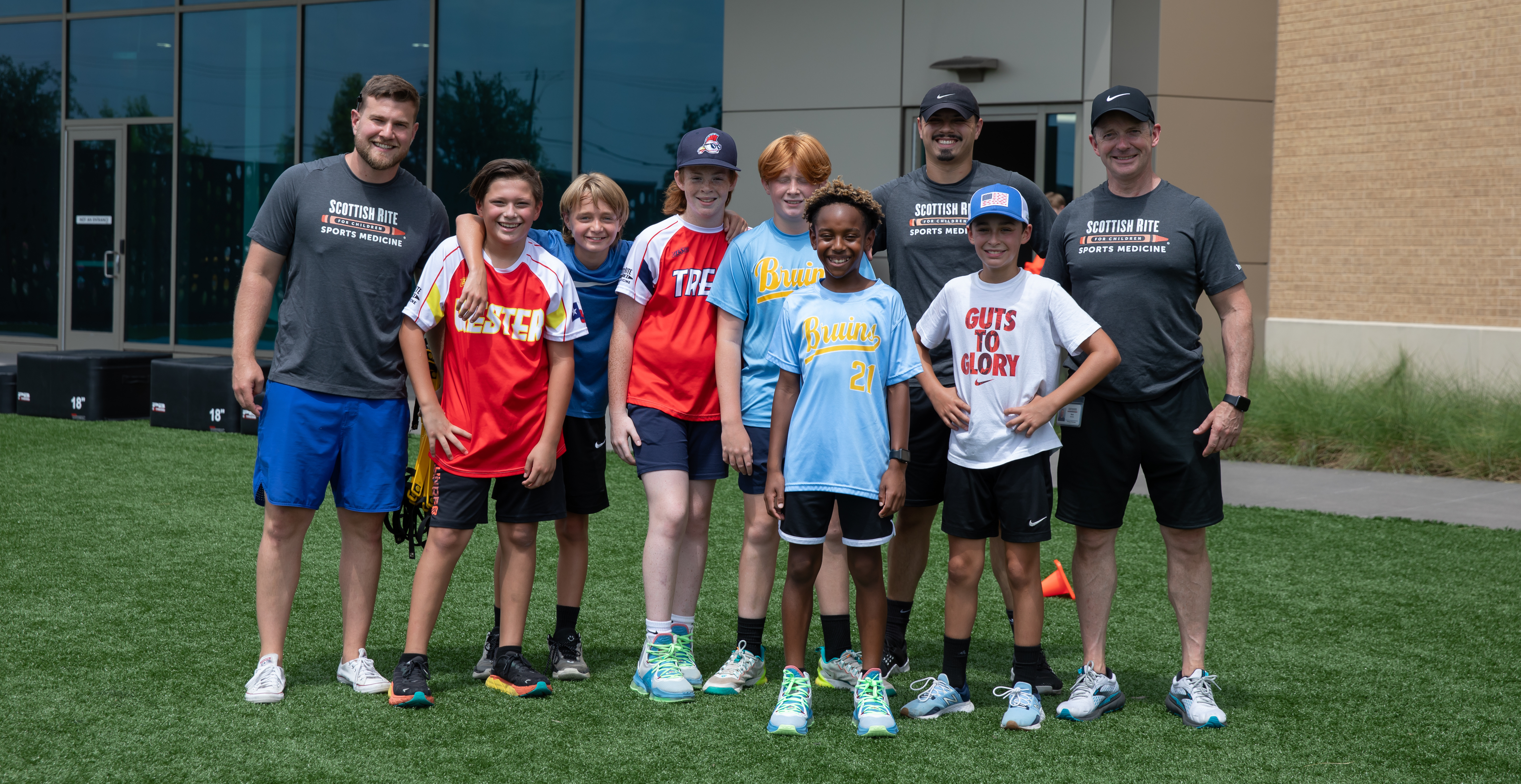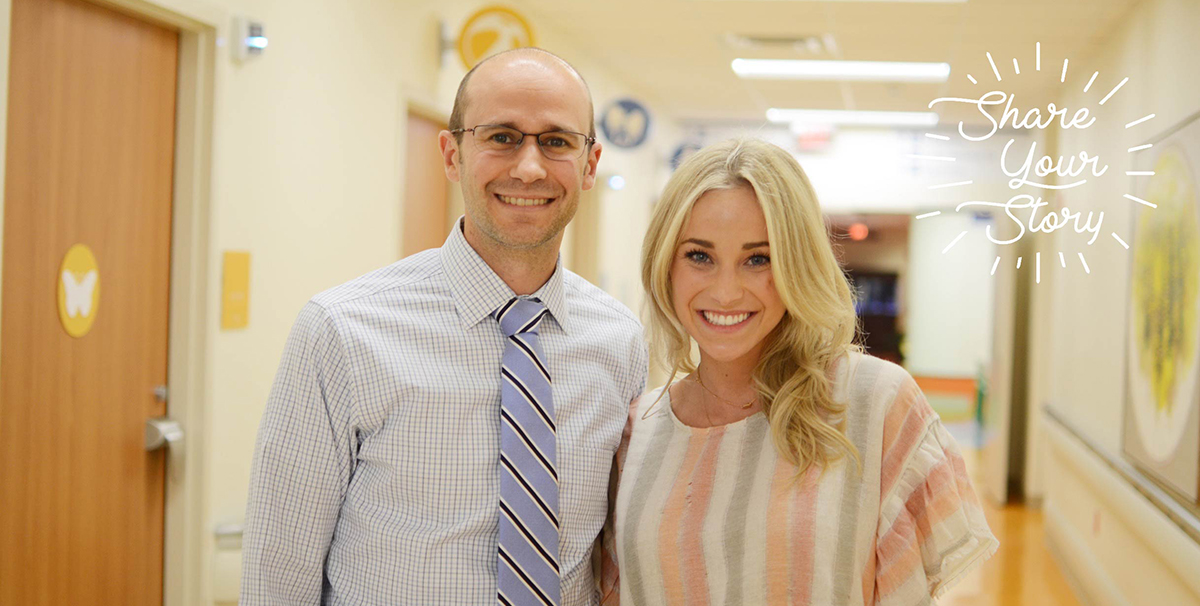
Jun 15, 2018 / Scoliosis & Spine
Share Your Story: The Journey of a Scoliosis Patient
Meet Peyton, a spine patient who had surgery to correct her scoliosis. Peyton was diagnosed with adolescent idiopathic scoliosis (AIS) at age 14. Learn more about her journey below.
Blog written by Peyton, age 21 of Frisco.
Hi y'all! I’m Peyton and in honor of Scoliosis Awareness Month I am sharing my story with adolescent idiopathic scoliosis (AIS) at Scottish Rite Hospital. I'll take you through my journey, beginning with diagnosis, my decision to have spinal fusion surgery and ending with recovery and where I am today.
My diagnosis process was actually a bit peculiar, as other hospitals and treatment centers that assessed my spinal curvature diagnosed the asymmetry they were seeing as "overdevelopment of muscle" on one side of my back. I was an all-star cheerleader/competitive athlete for 13 years growing up, and I was a flyer. For those who aren't familiar with the sport of cheerleading, a flyer is the athlete in the air that executes body positions on the hands of the bases who are holding them up. Initially, the statement of "overdevelopment of muscle" seemed feasible, as I was consistently working and stretching one side of my back with little time and attention spent on the other side. The diagnosis wasn't settling right with my mom. Additionally, my best friend's mom, who also has scoliosis, was the first person to catch and actually call this so-called ‘overdevelopment' scoliosis.
Once diagnosed, my treatment plan began immediately with bracing. I will be honest, as an athlete and highly active teen who was involved in numerous school organizations, school cheerleading, school athletics and all-star competitive cheerleading, the idea of being limited by bracing was not easy for me to wrap my head around. The goal was to be in the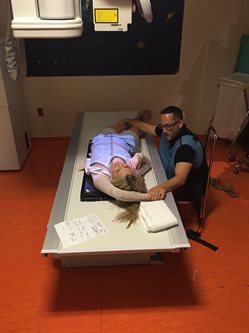 brace for at least 18 and up to 22 hours a day. If memory serves me correctly, upon hearing this, I immediately started crying. I thought this meant that I was going to have to stop cheering and, seemingly, everything else that I was involved in. At that point, Dr. Ramo discussed with me that time spent in the brace was an important goal, but I didn't have to stop doing my activities. In his expert opinion, he credited the reason that my body didn’t physically reflect what was going on internally was because I was an athlete training at an elite level, thus, developing an extremely strong core. Physically, my body did show evident signs of scoliosis, such as what is commonly referred to as "the hump" on the right side of my back, uneven shoulders and a short torso, but nothing like what is commonly seen in patients who are not training at the level that I was.
brace for at least 18 and up to 22 hours a day. If memory serves me correctly, upon hearing this, I immediately started crying. I thought this meant that I was going to have to stop cheering and, seemingly, everything else that I was involved in. At that point, Dr. Ramo discussed with me that time spent in the brace was an important goal, but I didn't have to stop doing my activities. In his expert opinion, he credited the reason that my body didn’t physically reflect what was going on internally was because I was an athlete training at an elite level, thus, developing an extremely strong core. Physically, my body did show evident signs of scoliosis, such as what is commonly referred to as "the hump" on the right side of my back, uneven shoulders and a short torso, but nothing like what is commonly seen in patients who are not training at the level that I was.
Fast forward four years. I had just turned 18 and was beginning my first year at Texas Christian University (TCU). While my all-star cheerleading career had come to an end, I was embarking on my college cheerleading journey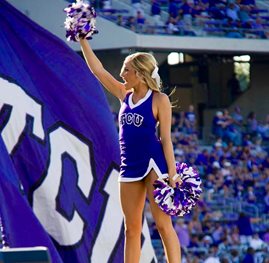 that fall. Dr. Ramo and I agreed that because my growth plates were now closed, there was no need to brace while in college. The plan was to watch my curve and see if it progressed even after my growth plates had closed. Unfortunately, my curve did continue, officially making me a candidate for spinal fusion surgery. As you can imagine, this was not the greatest of news. From the second I was diagnosed, I had been adamantly against surgery, and told my mom time and time again that I would never even consider it. Dr. Ramo knew this. He also knew I wasn't in pain and my condition wasn't preventing me from living my dream and achieving my goal to cheer for a Big 12/Division 1 university. Our plan, at that point, was to monitor my curve throughout the next year. Dr. Ramo was careful to make certain that I understood the big picture while still giving me personal space to make my own informed decision. He communicated his opinion, which was that I would benefit greatly in the long run by electing to have the surgery. He told me to come to him when I was ready to entertain surgery as an option for myself and/or when my cheerleading career was finished – then we would talk.
that fall. Dr. Ramo and I agreed that because my growth plates were now closed, there was no need to brace while in college. The plan was to watch my curve and see if it progressed even after my growth plates had closed. Unfortunately, my curve did continue, officially making me a candidate for spinal fusion surgery. As you can imagine, this was not the greatest of news. From the second I was diagnosed, I had been adamantly against surgery, and told my mom time and time again that I would never even consider it. Dr. Ramo knew this. He also knew I wasn't in pain and my condition wasn't preventing me from living my dream and achieving my goal to cheer for a Big 12/Division 1 university. Our plan, at that point, was to monitor my curve throughout the next year. Dr. Ramo was careful to make certain that I understood the big picture while still giving me personal space to make my own informed decision. He communicated his opinion, which was that I would benefit greatly in the long run by electing to have the surgery. He told me to come to him when I was ready to entertain surgery as an option for myself and/or when my cheerleading career was finished – then we would talk.
Almost one year to the date later, I had what I call a "come to Jesus" moment. A light went off in my head and I just knew. I knew my body was changing. I knew, for the first time ever, that my body was physically reflecting what was taking place internally. I knew I needed the surgery. So, one month before the end of my sophomore year at TCU, I called my parents and asked them to schedule a consultation for surgery. When I arrived for my appointment in May 2016, there was a note on my chart that said “consultation.” When Dr. Ramo walked in and saw this, he thought it was a mistake. I told him it wasn't, and I was ready. Being the miracle worker that I believe him to be, he scheduled my surgery for June 15, 2016.
I arrived for surgery early on the morning of June 15, 2016. My surgery was approximately six and half hours long with zero complications. The early morning hours on the day after surgery were a bit rough as they transitioned me from IV pain meds to oral. My team of nurses took absolute perfect care of me. They were extraordinarily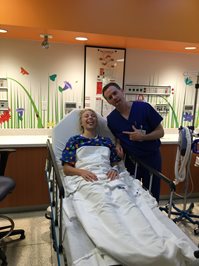 compassionate, while still making sure to keep me on track in terms of movement. I stayed in the hospital for three days and went home on day four after my procedure. Once I was home, I stopped taking all narcotic pain medications and, instead, alternated between hospital doses of Advil and Tylenol.
compassionate, while still making sure to keep me on track in terms of movement. I stayed in the hospital for three days and went home on day four after my procedure. Once I was home, I stopped taking all narcotic pain medications and, instead, alternated between hospital doses of Advil and Tylenol.
My biggest tip is to move as much as possible during the day, especially if you feel yourself getting uncomfortable, and even during the night when you wake up to take medicine. It helps the muscles in your back not stiffen up so much as your body gets use to the new you. My recovery was just as my surgery, completely complication free. For this I will be forever grateful.
I believe that choosing to get spinal fusion surgery is the best decision I will ever make for myself. I know that’s a huge statement, but I whole-heartedly stand by it. My body is far better aligned now. Clothing fits me better. I am no longer self-conscious about the physical aspects of scoliosis, and as a matter of fact, I'm quite proud of my scar! It has been amazing to see how my body has changed and adjusted to how it’s supposed to be post-surgery. Physically, I can do absolutely anything I could before, other than pulling elite cheerleading body positions or yoga positions that require a lot of back arch flexibility.
To the entire staff at Scottish Rite Hospital, the gratitude I have for you is difficult to communicate. Thank you for giving me a body that will be physically capable of doing absolutely anything that I want to do for the rest of my life.
I celebrate two years since my surgery today, June 15, 2018!
Blog written by Peyton, age 21 of Frisco.
Hi y'all! I’m Peyton and in honor of Scoliosis Awareness Month I am sharing my story with adolescent idiopathic scoliosis (AIS) at Scottish Rite Hospital. I'll take you through my journey, beginning with diagnosis, my decision to have spinal fusion surgery and ending with recovery and where I am today.
My diagnosis process was actually a bit peculiar, as other hospitals and treatment centers that assessed my spinal curvature diagnosed the asymmetry they were seeing as "overdevelopment of muscle" on one side of my back. I was an all-star cheerleader/competitive athlete for 13 years growing up, and I was a flyer. For those who aren't familiar with the sport of cheerleading, a flyer is the athlete in the air that executes body positions on the hands of the bases who are holding them up. Initially, the statement of "overdevelopment of muscle" seemed feasible, as I was consistently working and stretching one side of my back with little time and attention spent on the other side. The diagnosis wasn't settling right with my mom. Additionally, my best friend's mom, who also has scoliosis, was the first person to catch and actually call this so-called ‘overdevelopment' scoliosis.
This confirmed my mom's suspicions, so we met with my childhood pediatrician who referred us to Texas Scottish Rite Hospital for Children in Dallas, where I was diagnosed with adolescent idiopathic scoliosis at age 14 by Dr. Brandon Ramo.
Once diagnosed, my treatment plan began immediately with bracing. I will be honest, as an athlete and highly active teen who was involved in numerous school organizations, school cheerleading, school athletics and all-star competitive cheerleading, the idea of being limited by bracing was not easy for me to wrap my head around. The goal was to be in the
Fast forward four years. I had just turned 18 and was beginning my first year at Texas Christian University (TCU). While my all-star cheerleading career had come to an end, I was embarking on my college cheerleading journey
Almost one year to the date later, I had what I call a "come to Jesus" moment. A light went off in my head and I just knew. I knew my body was changing. I knew, for the first time ever, that my body was physically reflecting what was taking place internally. I knew I needed the surgery. So, one month before the end of my sophomore year at TCU, I called my parents and asked them to schedule a consultation for surgery. When I arrived for my appointment in May 2016, there was a note on my chart that said “consultation.” When Dr. Ramo walked in and saw this, he thought it was a mistake. I told him it wasn't, and I was ready. Being the miracle worker that I believe him to be, he scheduled my surgery for June 15, 2016.
I arrived for surgery early on the morning of June 15, 2016. My surgery was approximately six and half hours long with zero complications. The early morning hours on the day after surgery were a bit rough as they transitioned me from IV pain meds to oral. My team of nurses took absolute perfect care of me. They were extraordinarily
I also relied heavily on pillows, lots and lots of pillows, that helped prop me up and keep me comfortable while sitting or lying down. I highly recommend a wedge pillow for ease of getting in and out of bed.
My biggest tip is to move as much as possible during the day, especially if you feel yourself getting uncomfortable, and even during the night when you wake up to take medicine. It helps the muscles in your back not stiffen up so much as your body gets use to the new you. My recovery was just as my surgery, completely complication free. For this I will be forever grateful.
I believe that choosing to get spinal fusion surgery is the best decision I will ever make for myself. I know that’s a huge statement, but I whole-heartedly stand by it. My body is far better aligned now. Clothing fits me better. I am no longer self-conscious about the physical aspects of scoliosis, and as a matter of fact, I'm quite proud of my scar! It has been amazing to see how my body has changed and adjusted to how it’s supposed to be post-surgery. Physically, I can do absolutely anything I could before, other than pulling elite cheerleading body positions or yoga positions that require a lot of back arch flexibility.
To the entire staff at Scottish Rite Hospital, the gratitude I have for you is difficult to communicate. Thank you for giving me a body that will be physically capable of doing absolutely anything that I want to do for the rest of my life.
I celebrate two years since my surgery today, June 15, 2018!
